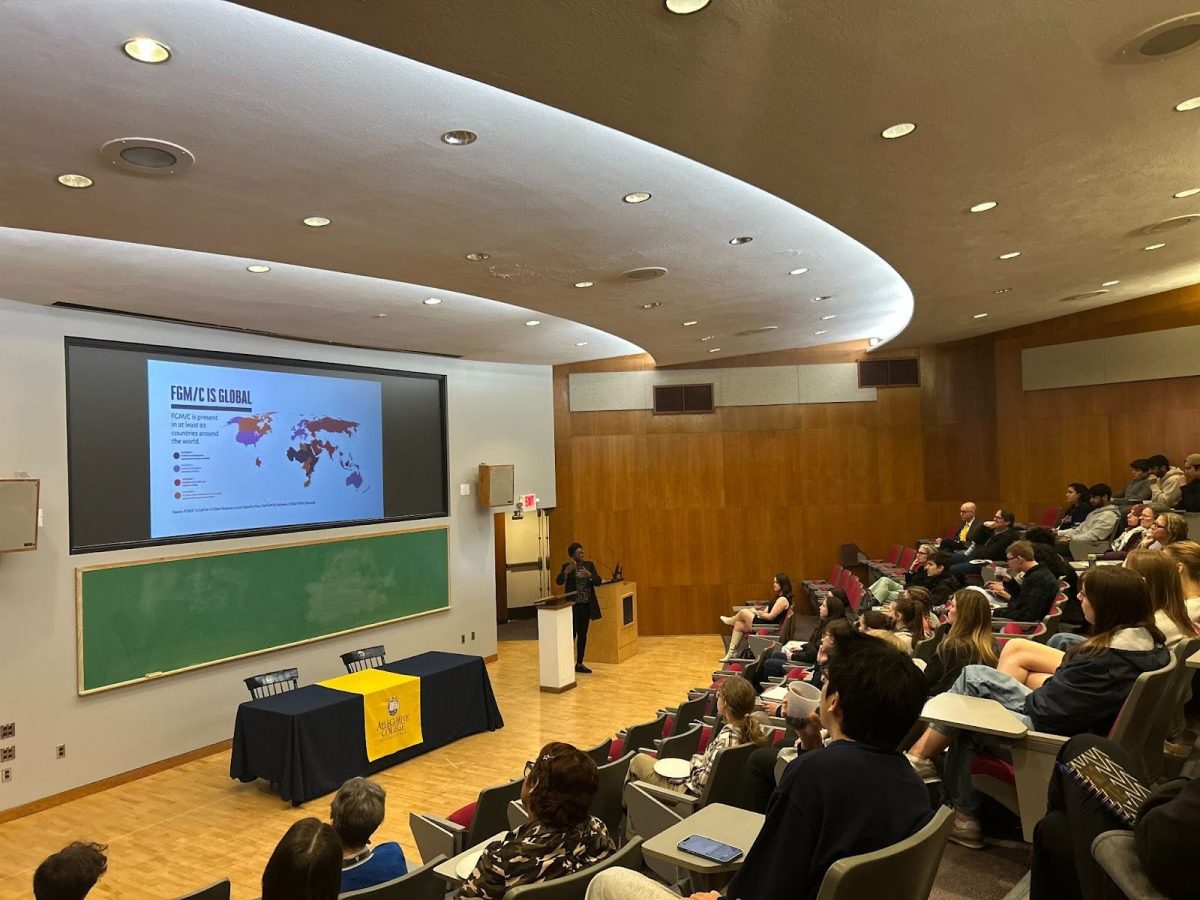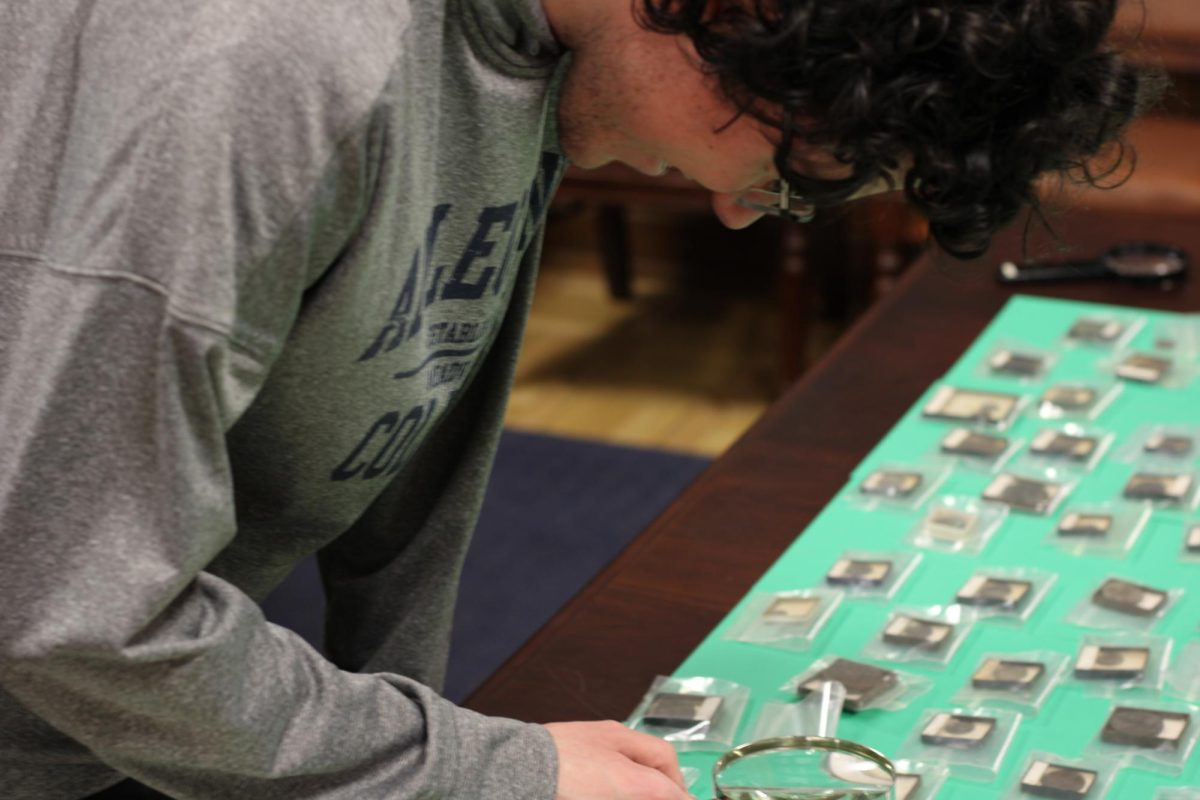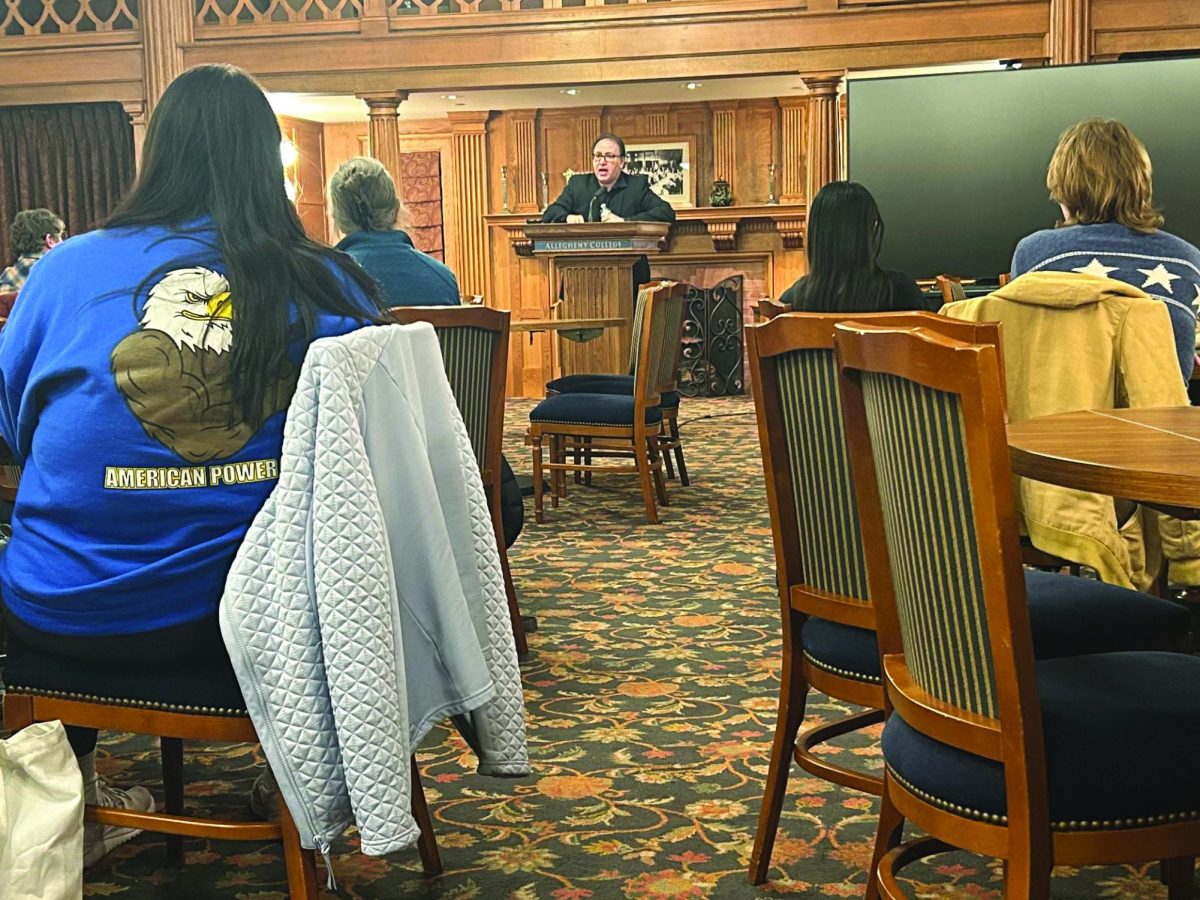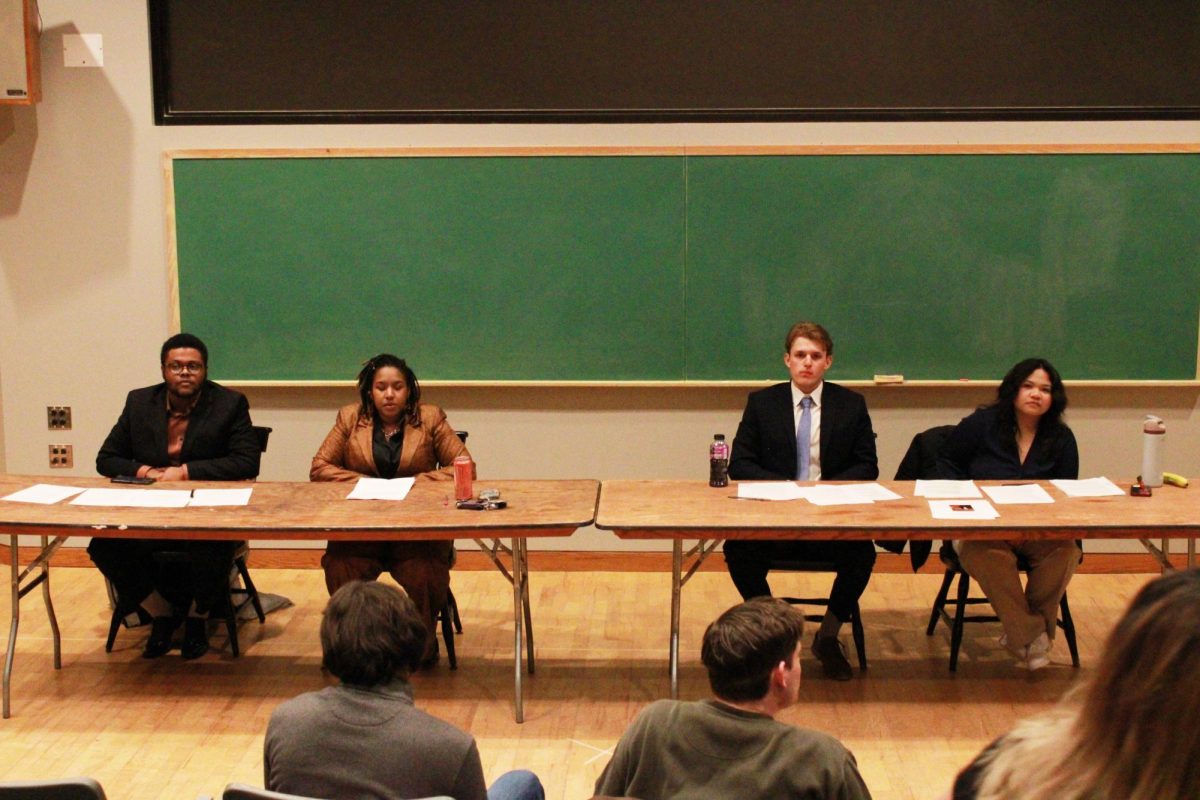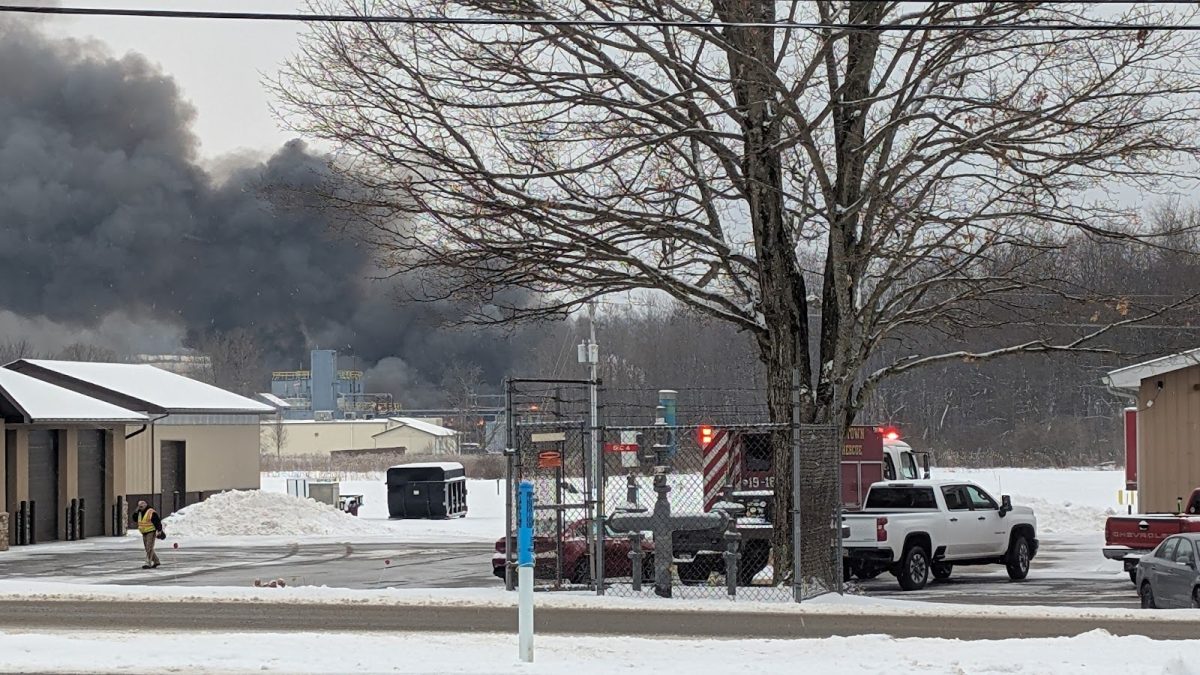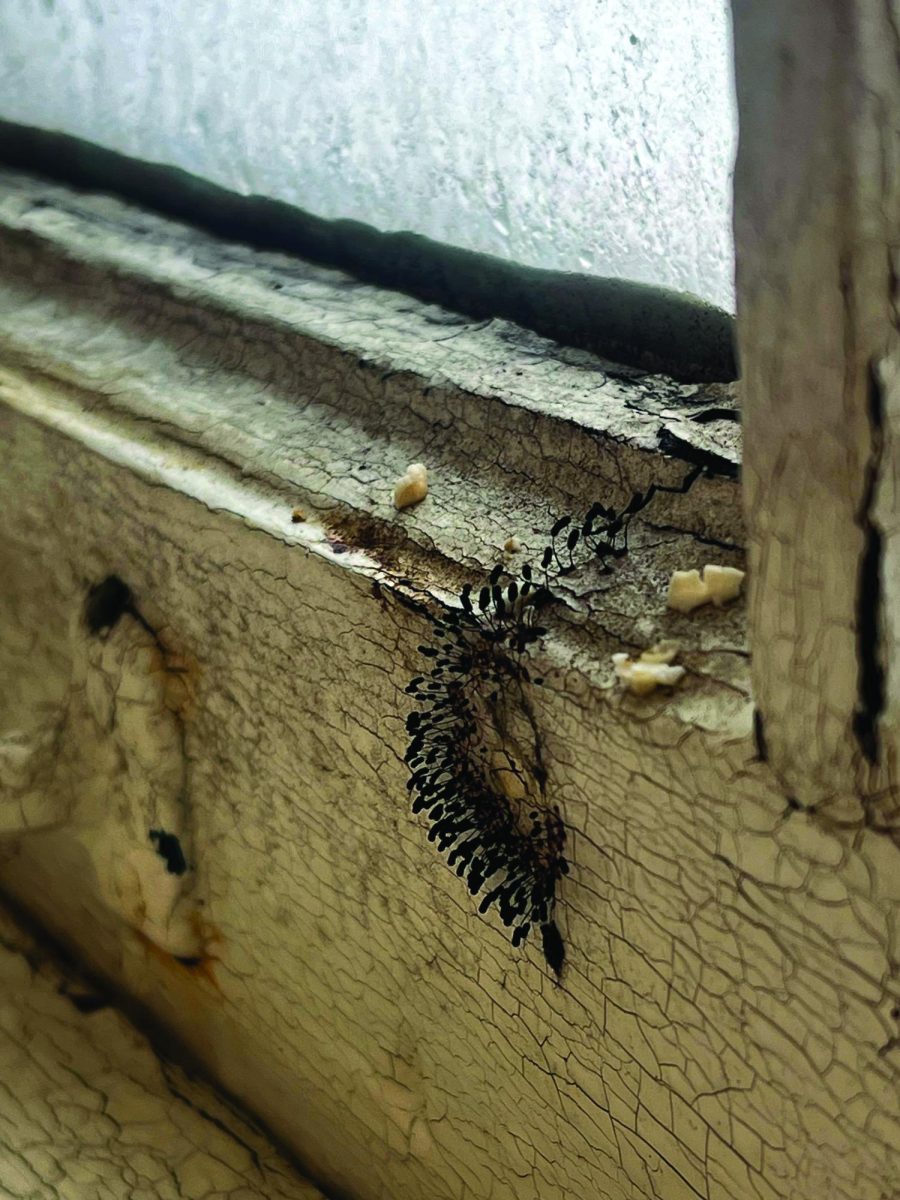Caflisch Hall was demolished to the ground six years before its 100th birthday in August of 2023, and students, faculty and alumni come together to reminisce about this complex historical building.
“When I saw the first brick get torn down I got kind of emotional because of how historical it is,” said Dean for Student Life Trae Yeckley.
Caflisch was built in 1929 with a donation made by Margaret Caflisch as a memorial for her husband Jacob Caflisch, according to Allegheny College’s class of 1966 55th reunion website.
Anyone who has lived in this 94-year-old building knows about all its complexities and hard-to-navigate corridors that have charmed generations of students. For those who haven’t walked through this confusing building, you may be unfamiliar with the doors that lead to specific pod-like floors, or how you would often need to go outside or walk through the basement to get to a friends door in another section, or how walking through the bathroom will lead you to another hallway. All of this, however, has caused generations of students to hold Caflisch so close to them.
“Multiple alumni have gotten bricks from Caflisch because they lived there for many years,” said Katie McLendon, ’25.
One alumna, Annmarie Sabovic, ’96, lived in Caflisch from the fall of 1993 to the spring of 1996, and had asked one of the workers for a brick and got it, according to McLendon.
In the turn of the century, there have been numerous students who have walked through, and possibly have gotten lost in, the charmingly confusing layout that is Caflisch. Now the last class to live and navigate this building is the class of 2025.
“It was very sad to see Caflisch go, especially so suddenly,” said Kalliyan Greevy, ’25. She added that her aunt had previously lived in the same suite that she and her roommate shared last year.
“It was a cool way to connect with other alum that I’m sad will no longer continue,” Greevy said. Emotional connection alone could not keep this building standing, though.
“It was one of the most difficult buildings to maintain,” Yeckley said. “The cleaning staff had to work extra hard to maintain it. It took a lot of resources to keep it up.”
Maley Gleason, ’25, was not surprised the building came down. “There were definitely numerous problems with the building and the bathrooms were dated,” Gleason said. She also mentioned that she likes the fact that the school sourced local companies to work with the demolition process.
Director of Sustainability Kelly Boulton, ’02, chimed in on the aspect of pulling in local non-profit organizations during this demolition process.
“We collaborated with a local non-profit to remove items like windows and doors that could be used in other construction projects,” said Boulton. She added that the fire department was also invited to use the space for training and that there were sustainability efforts put in place.
“We stipulated that demolished materials must be recycled,” Boulton said. “For example, metal will be recycled and brick and concrete will be crushed for reuse.”
Ultimately this historical building with its confusing architecture that is believed to have been constructed by a person who designed prisons, and the many other aspects that make it so unique, will be dearly missed.
Both Gleason and Greevy are excited to see what becomes of the open space that will emerge from the rubble. The college plans to use the empty lot to extend the Gator Quad to provide more room for various student activities.
Greevy said, “I hope that whatever the space becomes will hold the same amount of love and happiness that Caflisch held for so many of us over the years!”
Categories:
The emotional demolition of the Caflisch dormitory

Gallery • 3 Photos
Story continues below advertisement
0
More to Discover
About the Contributor
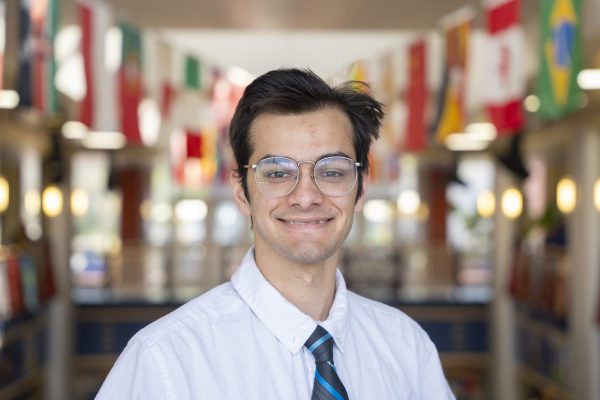
Sami Mirza, Editor-in-Chief
Sami Mirza is a senior from many different places. He is majoring in International Studies with a focus on the Middle East and North Africa and minor in Arabic. This is his fourth year on staff and his second in the EIC position; he has previously worked on News and Features. When not writing, shooting, or editing for The Campus, Sami can be found playing a surprisingly healthy amount of video games, working the graveyard shift at Pelletier Library, and actually doing his homework.





